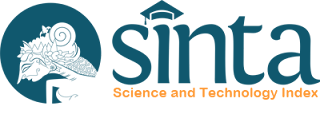Taṭbīq al-Wasīlah al-Raqmiyyah "Klāss Dūjū" bi Istikhdām Namūdhaj "Flībīd Klāsrūm" li Taʿlīm al-Lughah al-ʿArabiyyah
Abstract
Educational technology is a crucial tool for advancing the teaching-learning process, prompting researchers to explore supportive digital media. This study examined the impact of implementing the digital tool ClassDojo with the Flipped Classroom model in teaching Arabic to ninth-grade students at two schools in Medan. The research responded to the rising need to improve students’ Arabic skills and foster greater engagement in the learning process, especially amid shifts to technology-based models that support self-directed learning. This study employed a descriptive qualitative method to explore the experiences and perceptions of students and teachers regarding the implementation of ClassDojo using the Flipped Classroom model. Data were collected through interviews, observations, and documentation, as well as primary sources such as students and teachers and secondary sources such as previous studies and relevant literature. The researchers analyzed the data using statistical analysis tools and examined interview data to understand the impact of the Flipped Classroom model with ClassDojo on student learning. Results show that using ClassDojo in the Flipped Classroom model significantly improves students’ engagement and comprehension compared to traditional methods. This study highlights the value of integrating educational technology with innovative models like Flipped Classroom to enhance learning effectiveness and provide an interactive learning environment.
Keywords
References
Adebayo, E. O. (n.d.). Flipped Classroom: A Recommended Blended Learning for the 21st Century Effective Classroom Teaching. Omoniyi, 101.
Afandi, M., Chamalah, E., & Wardani, O. P. (2013). Model dan Metode Pembelajaran di Sekolah (1st ed.). UNISSULA PRESS Semarang.
Ahyat, N. (2017). Metode pembelajaran pendidikan agama islam. EDUSIANA: Jurnal Manajemen Dan Pendidikan Islam, 4(1), 24–31.
Annisa, R., Wibowo, T., & Sapti, M. (2022). Implementation of Edmodo and Classdojo on the Activeness and Achievements of Students during Covid-19 Pandemic in Learning Mathematics. Jurnal Iqra’ : Kajian Ilmu Pendidikan, 7(1), 192–203.
Bahçeci, F. (2019). The Effects of Digital Classroom Management Program on Students-Parents and Teachers. International Online Journal of Educational Sciences, 11(4), 1.
Benzizoune, O. (2024). Enhancing Classroom Management and Student Engagement: The Role of ClassDojo and Gamification in Education. Journal of English Language Teaching and Applied Linguistics, 6(3), 106–114. https://doi.org/10.32996/jeltal
Bishop, J. L., & Verleger, M. A. (2013). The Flipped Classroom: A Survey of the Research. ASEE Annual Conference and Exposition.
Božić, A. V, Hoić-Božić, N., Dlab, M. H., Stančin, K., & Jagušt, T. (2024). Analysis of the Gamification Aspects of Digital Educational Tools Using Gamification Classification. International Conference on Software, Telecommunications and Computer Networks, 1(6).
Būnwah, N., & Taḥrīsy, ‘A. A. (2018). “Al-Wasīlah al-Ta‘līmiyyah wa-Ahammiyyatuhā fī Taḥsīn Jawdat al-Adā’ al-Tarbawī”. Majallat al-Badr, 10(5), 459–470.
Chiarelli, M., Szabo, S., & Williams, S. (2006). Using ClassDojo to help with Classroom management during guided reading. Texas Journal of Literacy Education, 3(2), 81–88.
Digiacomo, D. K., Greenhalgh, S., & Barriage, S. (2022). How Students and Principals Understand ClassDojo : Emerging Insights. Journal TechTrends, 172–184.
Dillon, M. B. M., Radley, K. C., Tingstrom, D. H., Dart, E. H., & Barry, C. T. (2019). The effects of tootling via ClassDojo on student behavior in elementary classrooms. School Psychology Review, 48(1), 18–30.
Dinata, Y. M. (2022). Strategi flipped classroom dalam pengembangan keterampilan berbicara bahasa arab di madrasah (studi pada mts daarul ‘uluum pui majalengka jawa barat). Universitas Islam Negeri (UIN) Syarif Hidayatullah.
Jaramillo-mediavilla, L., Basantes-andrade, A., Cabezas-gonz, M., & Casillas-martin, S. (2024). education sciences Impact of Gamification on Motivation and Academic Performance : A Systematic Review. Education Sciences, 14(6), 639.
Laili, N., Darmawan, D., & Yunusi, M. Y. M. El. (2024). PENGARUH MEDIA PEMBELAJARAN , METODE PEMBELAJARAN , DAN DUKUNGAN ORANG TUA TERHADAP MINAT BELAJAR SISWA SMP BUANA WARU SIDOARJO. Jurnal Khazanah Pendidikan, 18(2), 260–271. https://doi.org/http://dx.doi.org/ 10.30595/jkp.v18i2.21824 E-ISSN:2807-1379
Manolev, J., Sullivan, A., & Tippett, N. (2024). Reshaping school discipline with metrics : an examination of teachers ’ disciplinary practices with ClassDojo. British Journal of Sociology of Education, 45(7–8), 1146–1160. https://doi.org/10.1080/01425692.2024.2407874
Martín Delgado, J. (2024). Flipped Classroom: A Practical Proposal for 4th Grade of Primary Education.
Masruri, M., Murtiyasa, B., & Muhibbin, A. (2017). Pemanfaatan Aplikasi Class Dojo Sebagai Pengganti Buku Penghubung Orang Tua Siswa Di SD Djamaatul Ichwan Program Utama Surakarta. Doctoral dissertation, Universitas Muhammadiyah Surakarta.
Mok, H. N. (2014). Teaching Tip : The Flipped Classroom. Journal of Information Systems Education, 25(1), 7–11.
Nuriyawan, A., & Wibawa, S. C. (2020). Studi komparasi penggunaan platform socrative dan classdojo di kelas google classroom. Jurnal IT-EDU, 05(01), 262–272.
Omiegbe, O., & Osagiede, M. A. (2024). Technological Integration in Management Curriculum. NIU Journal of Educational Research, 10(1), 33–41.
Putrie, D. I., Salam, U., & Riyanti, D. (2024). Unveiling the Landscape of ClassDojo in Education : A Systematic Review. Elsya : Journal of English Language Studies, 6(2), 185–208. https://doi.org/https://journal.unilak.ac.id/index.php/elsya
Rakhmawati, D. (2023). Manajemen Penerapan Model Flipped Classroom Menghadapi Learning Loss pada Masa Pandemi Covid-19 di SD Al-Firdaus Surakarta Tahun 2022. Universitas Islam Negeri Raden Mas Said Surakarta.
Selian, S. N. (2024). Psikologi Anak Berkebutuhan Khusus. Syiah Kuala University Press.
Al-Sharḥah, A. A. I. ‘A. A., A. Ashraf Ibrāhīm ‘Abd al-Ḥamīd, Zaydān, al-Mushrif, & A. D. ‘A. Ḥ. (2024). “Darajah Ahammiyyat al-Wasā’il al-Ta‘līmiyyah fī Madāris Tarbiyyah wa-Ta‘līm Janūb al-Khalīl min Wajhat Naẓar Mu‘allimī al-Lughah al-‘Arabiyyah”. Dirāsāt ‘Arabiyyah fī al-Tarbiyah wa-‘Ilm al-Nafs, 150(1), 59–78.
Steed, A. (2012). The flipped classroom. Teaching Business & Economics, 16(3), 9.
Al-Suhalī, A. B. Ḥ. A., & Al-‘Āmūdī, H. B. S. A. (2022). “Fā‘iliyyat Istrātījiyyat al-Ṣaff al-Maqlūb bi-Istikhdām Ṭabīq Klās Dūjū (ClassDojo) bi-Muqarrar al-Fīzīyā’ li-Tanmiya Mahārāt al-Ta‘allum al-Munaẓẓam Dhātiyyan ladā Ṭālibāt al-Marḥalah al-Thanawiyyah”. Al-Majallah al-Miṣriyyah li-al-Tarbiyah al-‘Ilmiyyah, 25(4), 127–155.
Al-‘Unayzī, Y. ‘A. A. (2019). “Madā Istikhdām Istrātījiyyat al-Ta‘līm al-Maqlūb (Flipped Learning) ladā Ṭālibāt Kulliyyat al-Tarbiyah al-Asāsiyyah bi-Dawlat al-Kuwayt”. Kulliyyah Mu‘tamadah min al-Hay’ah al-Qawmiyyah li-Ḍamān Jawdat al-Ta‘līm, 11(35), 342–307.
X, L. (2024). Research on Classroom Teaching Methods Supported by Visualization Tools. Evaluation of Educational Research, 2(5).
Yasin, M., Judijanto, L., Andrini, V. S., Patriasih, R., Hutami, T. S., Hasni, H., & Triyana, N. (2024). Model Pembelajaran Berbasis Teknologi: Teori dan Implementasi. PT. Green Pustaka Indonesia.
DOI: 10.15408/zr.v21i2.42385
Refbacks
- There are currently no refbacks.














